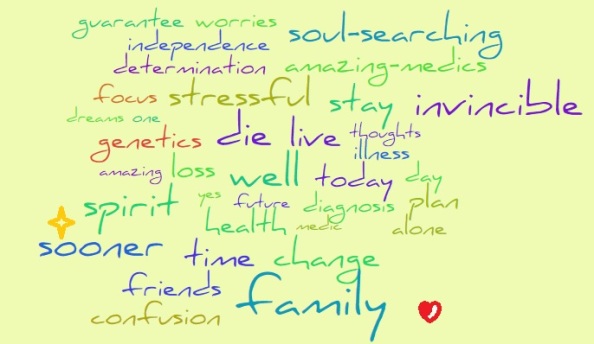I’m not an expert in this field but I’m trying to understand it as best I can. In much the same way that I set about researching information on my particular form of cancer, I’m now researching and learning about autoimmune conditions. I have them and they run in multiple generations of my family. Since none of my affected relatives are here to tell me about their experiences, I’m trying to piece it together myself. It’s a bit like looking for a needle in a haystack but so far I’ve discovered five things:
1. How many people are affected?
It’s difficult to find accurate figures on the number of people with autoimmune conditions. Estimates vary considerably. The American Autoimmune Related Diseases Association suggests 50 million Americans – more than twice as many as the National Institutes of Health suggest. That’s a significant difference. Most sources seem to agree women are more likely to be affected than men – that holds true within my own family. Overall, the prevalence of autoimmune conditions seems to be rising. As yet no-one really knows why.
2. How many autoimmune conditions are there and how are they diagnosed?
There are many autoimmune conditions – at least 80 to 100 and despite research, they can be difficult to diagnose. For some people diagnosis is made by accident when assessing a seemingly more obvious illness. That happened to me. For others, diagnosis becomes a process of elimination – which means undergoing many different tests to rule out common or more obvious causes until such time as a less likely cause is deemed the culprit. As a patient, this can feel frustrating and traumatic in equal measure, especially when the outcome always seems to involve more tests. This happened to me too. Fortunately my GP is not in the habit of passing things off as a virus or post-viral fatigue.
3. Does it run in the family or are the conditions linked?
With my scientific hat on, it looks likely certain autoimmune conditions are linked. Having one in the family might mean other members of the family can have the same or similar conditions. Having one condition myself might generate a greater likelihood of having another… Or not… because autoimmunity seems to be another a very complex area of medicine and quite poorly understood unless you specialise in this field. My level of science doesn’t extend to anywhere near the expertise required to get to grips with all of this. Even if it did, our propensity for focusing on specific diseases or groups of symptoms makes it possible to miss subtle links – hence the turbulent experience of diagnosis via a process of elimination.
4. Is it worrying?
None of us wants to be or feel unwell. Having unexplained and debilitating symptoms is worrying. Having test after test without any clear answers becomes far more worrying, even for those of us who’ve been through countless tests, treatments and operations before. Without solid answers, the hamster wheel of tests can eventually lead to self-doubt, questioning your sanity or convincing yourself you’re imagining it all. I only escaped this downward spiral because a very dear friend with CFS had similar experiences. She isn’t insane and hadn’t imagined her chronic and very debilitating illness, but for years an array of professionals told her there was nothing wrong, even when she could barely stand or stay awake.
5. Has it changed things?
It’s said with age comes wisdom and I’d like to live long enough to be wise. Surviving a very aggressive cancer didn’t grant me wisdom but I do think quite differently about life. My health dipped suddenly a few weeks ago and a plethora of tests ensued. It’s autoimmune, not more cancer. In my world almost anything is better than more cancer, even if it isn’t great. Pre-cancer I’d have ignored this latest health thing in favour of work. Now I have a more considered approach. Of all the rogue genes in my gene pool, ‘nine-lives-of-a-cat gene’ isn’t going to be one of them. I’ve spent enough time in hospitals to absorb the fact life is fragile. So I’m giving up the career I’ve worked my socks off for over the last 20 years because simply being here for my loved ones for as long as possible is more important to me than anything else. My work has been a buzz and somewhat addictive; stretching, fun, full-on and frustrating, usually in that order. I’ll miss that I’m sure. But in 2019 and for the first time ever I get to take a proper break, take proper care of myself, and get on with the business of living instead of simply existing.
If life zooms by like a bullet train, people along the route become a faceless blur. Why have a family album full of blurs when pausing for a while is all it takes to stay in focus, and experience the detail in full HD…?













